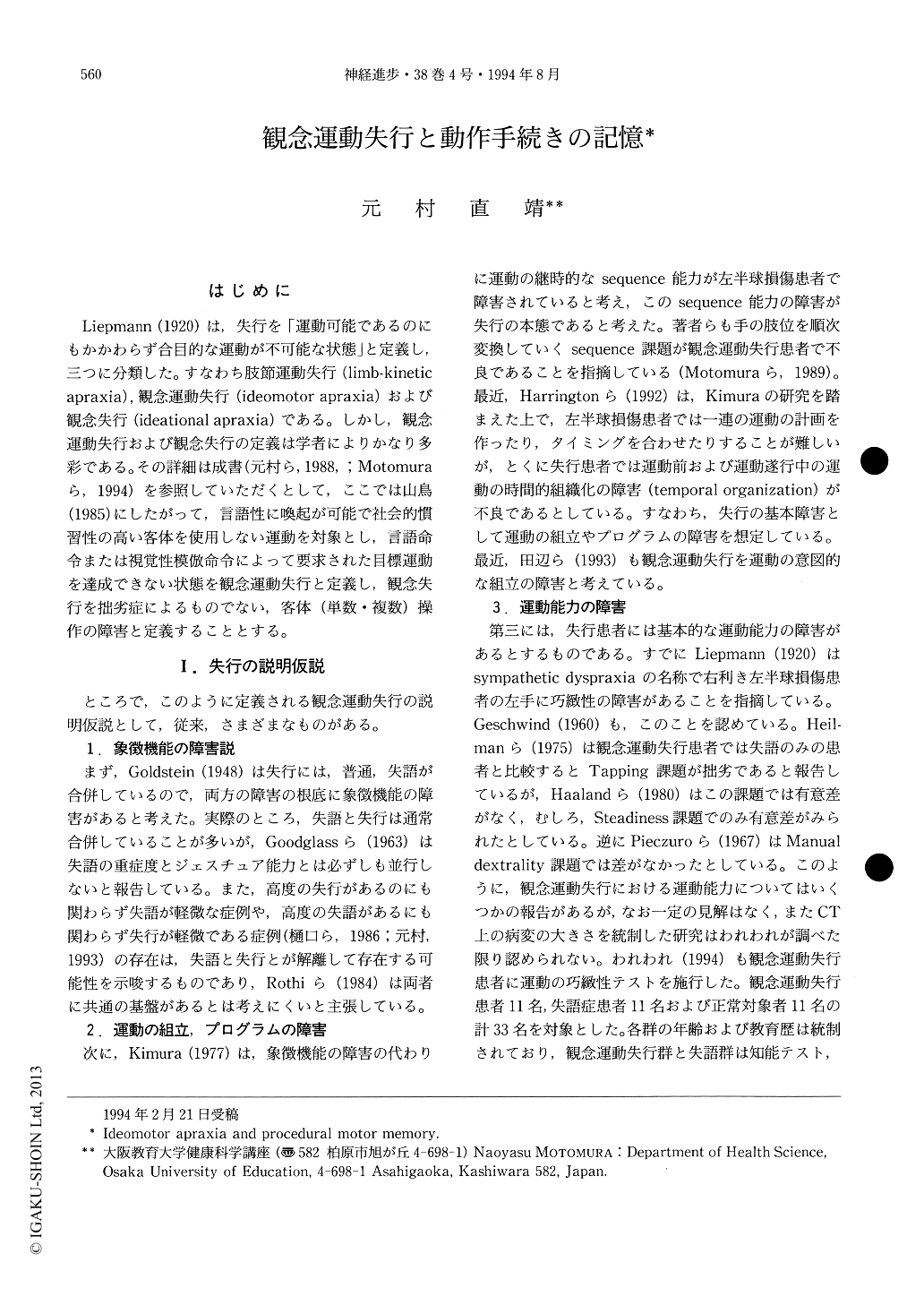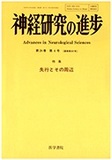Japanese
English
- 有料閲覧
- Abstract 文献概要
- 1ページ目 Look Inside
はじめに
Liepmann(1920)は,失行を「運動可能であるのにもかかわらず合目的な運動が不可能な状態」と定義し,三つに分類した。すなわち肢節運動失行(limb-kinetic apraxia),観念運動失行(ideomotor apraxia)および観念失行(ideational apraxia)である。しかし,観念運動失行および観念失行の定義は学者によりかなり多彩である。その詳細は成書(元村ら,1988,;Motomuraら,1994)を参照していただくとして,ここでは山鳥(1985)にしたがって,言語性に喚起が可能で社会的慣習性の高い客体を使用しない運動を対象とし,言語命令または視覚性模倣命令によって要求された目標運動を達成できない状態を観念運動失行と定義し,観念失行を拙劣症によるものでない,客体(単数・複数)操作の障害と定義することとする。
The hypotheses for explaining ideomotor apraxia were reviewed. There are at least 5 hypotheses for ideomotor apraxia.
1) Dysfunction of symbolization hypothesis : Goldstein (1948) suggested that because apraxia is commonly associated with aphasia, both disorders represent manifestations of a central dysfunction of symbolization.
2) Motor sequential disturbance or motor programming disturbance : Kimura (1977) also postulatedthat apraxia is a manifestation of central dysfunction. She suggested that the ability to successively sequence unique movements was impaired.

Copyright © 1994, Igaku-Shoin Ltd. All rights reserved.


